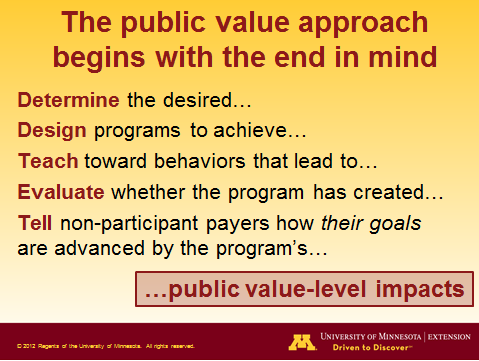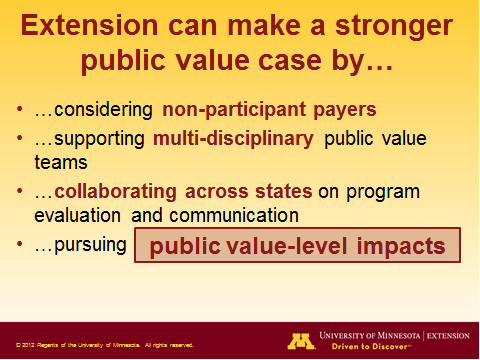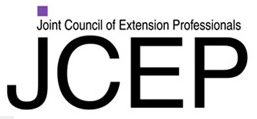National resources for impacts and public value
First, I think it was NIFA director Dr. Sonny Ramaswamy who mentioned an effort this summer to develop a national portal for impact reporting that will consolidate Extension program impact results.
Second, I believe it was ECOP chair Dr. Daryl Buchholz who highlighted ECOP’s Measuring Excellence initiative. It appears that this project is meant to define and demonstrate excellence and to report impacts for Cooperative Extension as a whole. From the website: “Cooperative Extension has advanced from merely reporting inputs and outputs to documenting outcomes and impacts of its programs. However, most of these measures are tied to specific programs. They are not generally assessed or considered at the organizational level.” While the “excellence” part of the website is well-developed, the pages having to do with impact are still under construction. I look forward to the work that will populate these pages with resources and guidance for Extension impact teams. Meanwhile, I have to give a shout out for the public value statements on the front page of the website!
By the way, my notes from the PILD keynote talks are a little sparse. If I am wrong about which speaker spoke about which initiative, please correct me in the comments. And if you know more about how the portal or the Measuring Excellence project can strengthen Extension’s public value case, please share that, too!
(Photo credit: USDAgov on FlickR)





